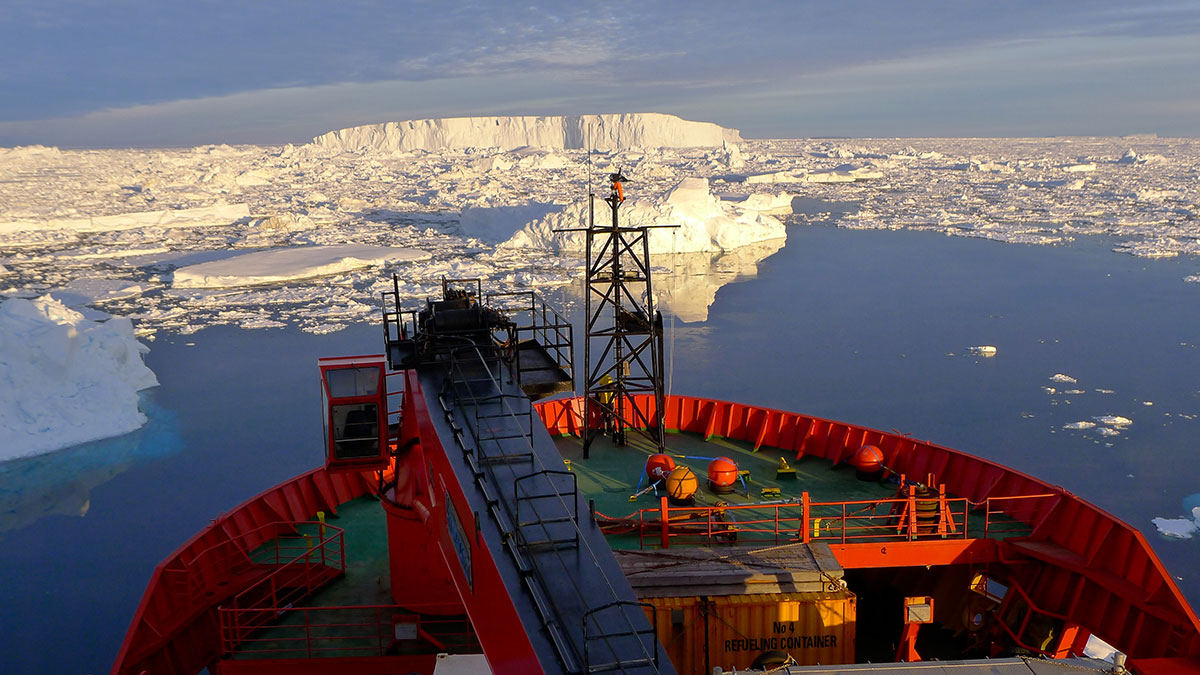Part of Earth’s deep-ocean conveyor belt is slowing, and melting ice is to blame, according to new research.
When the sea freezes around Antarctica’s fringes in winter, the ice expels salt into the water below. Trillions of metric tons of this briny, supercooled, heavy water cascade down Antarctica’s continental slope, dropping into the deep ocean in submarine waterfalls.
As these waters sink from the Antarctic shelf, they spread north through the Southern Ocean, driving abyssal circulation—the lower limb of the global ocean overturning circulation. They are the densest water masses in the world’s oceans and the engine room of a current system that conveys heat, dissolved gases, and nutrients around the world.

But diminishing glaciers in West Antarctica—primarily the Amundsen Sea—are freshening the shelf waters in the Ross Sea and slowing the production of bottom water, according to research led by Kathy Gunn, a physical oceanographer at the Commonwealth Scientific and Industrial Research Organisation in Hobart, Tasmania. Gunn and her colleagues examined waters in the Australian Antarctic Basin—the section of the Pacific Ocean between East Antarctica and southern Australia.

“Given that we expect the ice to continue melting, the most likely outcome is a continuation in the slowdown.”
They used decadal observations from research ships and continuous measurements from moorings to track changes in temperature, salinity, oxygen, and flow in the three sources of bottom water this basin receives: the Weddell Sea, the Adélie Land coast, and the Ross Sea. They found that the flows have become fresher, lighter, and smaller in volume since the 1990s and the abyssal circulation has slowed by almost a third. The largest changes occurred in flows from the Ross Sea.
“We’re in an area downstream of a lot of meltwater,” Gunn said. This meltwater from glaciers makes the ocean surface less salty, and when it freezes, the waters below are less dense than normal, falling into the deep more slowly.
“Given that we expect the ice to continue melting, the most likely outcome is a continuation in the slowdown,” Gunn said.

Meanwhile, a recent study led by oceanographer Shenjie Zhou, a postdoc at the British Antarctic Survey, showed a 20% slowdown in the Atlantic sector off Antarctica’s Weddell Sea. Zhou and his colleagues suggested that weakening of offshore winds, as part of a natural cycle, is shrinking ice-producing areas.
Both the Weddell Sea and Australian Antarctic Basin observations are early warning signs of a slowing overturning circulation, Zhou said. The main driver may differ between the two areas, but “the overall pattern will be determined by the weakest points of the system.”
Projections of Changing Waters
The observations are consistent with ocean–atmosphere–sea ice model projections published earlier this year showing that Antarctic overturning circulation could slow 40% by 2050 if greenhouse gas emissions continue unabated.
The projected changes are already well underway, said University of New South Wales oceanographer and modeler Matthew England, a coauthor on the modeling work and the new study on the Australian Antarctic Basin. The consequences of an ongoing slowing or collapse would be profound and likely irreversible, he said.
“As the overturning slows down, the ocean will start to stagnate a bit.”
Any signs of a slowing abyssal circulation could signal a fundamental shift in the equilibrium of the ocean and its role as a climate regulator, said physical oceanographer Natalie Robinson at New Zealand’s National Institute of Water and Atmospheric Research, who was not involved in the new studies. A slower circulation could mean less carbon dioxide and heat are absorbed into the oceans.
Gunn said she is concerned about effects of a slowing circulation on marine ecosystems. Abyssal circulation ventilates deep basins with oxygen, and the weakening has already reduced the flow of oxygen and thinned well-ventilated deep layers. This change could affect marine life at depth as well as the capacity of the overturning circulation’s upper limb to return nutrients to the surface. “As the overturning slows down, the ocean will start to stagnate a bit,” Gunn explained.
It may be too soon to say with certainty whether recent changes in the Ross Sea region are exceeding the range of natural variability, but it’s an area to watch closely because “the ice shelf is vulnerable to circulation changes that could rapidly allow much warmer water masses to enter its cavity,” Robinson said.
—Veronika Meduna (@VeronikaMeduna), Science Writer

